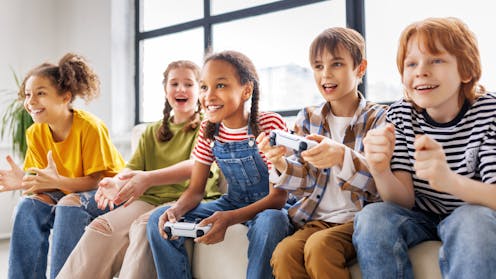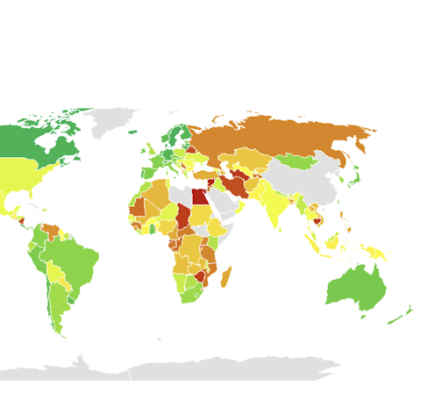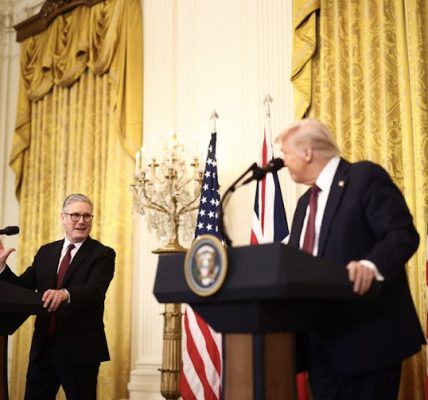School’s out – but as young people paint, skateboard and play with their friends, they’re still learning
Evgeny Atamanenko/Shutterstock
School holidays are underway across the UK. But while young people might be getting a break from the classroom and having a chance to spend more time on their hobbies, they are still learning – whether they’re playing video games, painting toy soldiers or out on their bike.
Learning doesn’t just happen at school, college, or university. For Danish learning expert Knud Illeris, any process not caused by biological maturation (for instance, growing from a baby into a toddler) counts as learning. Learning is both inevitable and ubiquitous: it is part of being alive. We cannot “not learn”.
We can chunk the enormity of what learning is into smaller digestible portions. These three portions (called learning contexts) are formal learning, non-formal learning and informal learning. We can think of them as an iceberg, with some parts visible and others hidden below the water.
Learning iceberg.
Runrun2/Shutterstock (edited)
Different contexts
Formal learning is the very tip of the iceberg. This aims to intentionally teach someone something. It is provided by an education or training organisation that will give you a certificate or diploma to show what you have learned. Schools, colleges and universities are examples of formal learning contexts.
Non-formal learning extends beneath the iceberg’s tip but remains above the water level. Like formal learning, it is learning as the result of some kind of teaching. However, non-formal learning is not necessarily provided by an education organisation, nor is it necessarily recognised with a certificate or diploma. Music lessons, sports clubs, cooking classes, developing skills at work, or museum tours all count as non-formal learning.
Beneath non-formal learning, shrouded under the sea, is the gargantuan base of the iceberg: informal learning. Unlike formal and non-formal learning, informal learning is generally unintentional, unplanned and unconscious. This could be absorbing social norms, such as how to greet someone you don’t know, or unexpectedly learning new words by listening to podcasts.
It’s a widely accepted assumption among academics that most of the learning we do is informal. And it makes sense when you think about how much young people’s development is unconscious and unplanned. For example, while being taught formally in school classrooms, they simultaneously informally learn values such as what it means to be – and behave like – a “good student”.
The iceberg illustrates why we often think of learning in a narrow way. We overvalue what is easily recognisable, such as the schooling that leads to an exam result. And we undervalue the much larger, but comparatively less visible remainder of the iceberg: non-formal and informal learning, such as through hobbies.
Young people, in particular, may overvalue formal learning for two reasons. First, it is tangible. It features physical buildings – schools, colleges and universities – where young people go almost every day to learn. In turn, they aim to leave these buildings with qualifications that “prove” what they have learned.
Second, even though across our lifespans we spend a tiny fraction in formal learning contexts compared to non-formal and informal ones, that tiny amount is disproportionately weighted towards our youth. Children and teenagers spend a huge amount of time being formally educated.
Learning through hobbies
To encourage young people to flourish as learners, we need to help them value non-formal and informal learning contexts. Hobbies are great for this. Hobbies are serious leisure activities which young people find interesting and fulfilling. They are serious because hobbies require perseverance to gain experience, a skillset and a knowledge base.
Whenever someone intentionally teaches a young person something hobby-related, that counts as non-formal learning. For instance, a coach explaining how to bounce a basketball, a music teacher describing how to hold a drumstick, or a friend explaining the rules to a board game.
Hobbies are equally infused with informal, unplanned and often unconscious learning. Playing video games inadvertently develops eye-hand coordination and cognitive function (storing and processing information). Stamp collecting can foster attention to detail. Skateboarding can improve resilience in the face of failure.
Part of the reason young people’s non-formal and informal hobby-related learning above is so difficult to recognise is because it is rarely described as “learning”. Instead, they “play” music and videogames; they “do” skateboarding and drawing.
Though play is one of the best ways young people learn, both young people and the adults in their lives may undervalue its impact. While adults may assume there is no relationship between play and learning, teenagers may perceive play as childish.
Too many young people think they are “bad learners” because they struggle in formal learning. However, I bet they are extraordinary learners when it comes to their hobbies. We simply need to help them recognise the value of non-formal and informal learning.
Ioannis Costas Batlle does not work for, consult, own shares in or receive funding from any company or organisation that would benefit from this article, and has disclosed no relevant affiliations beyond their academic appointment.



